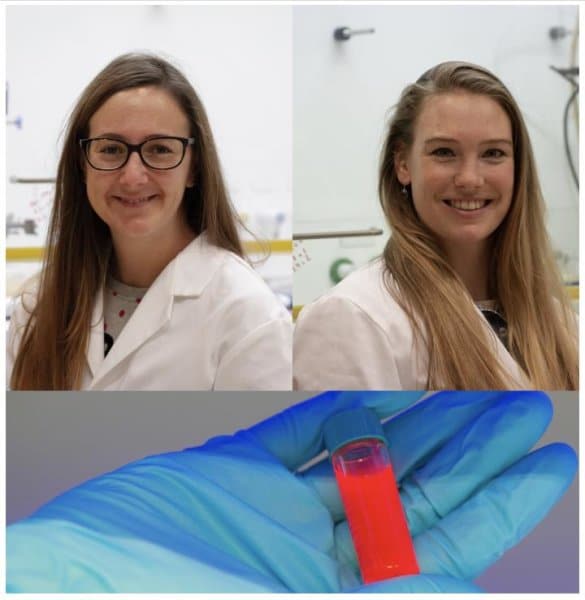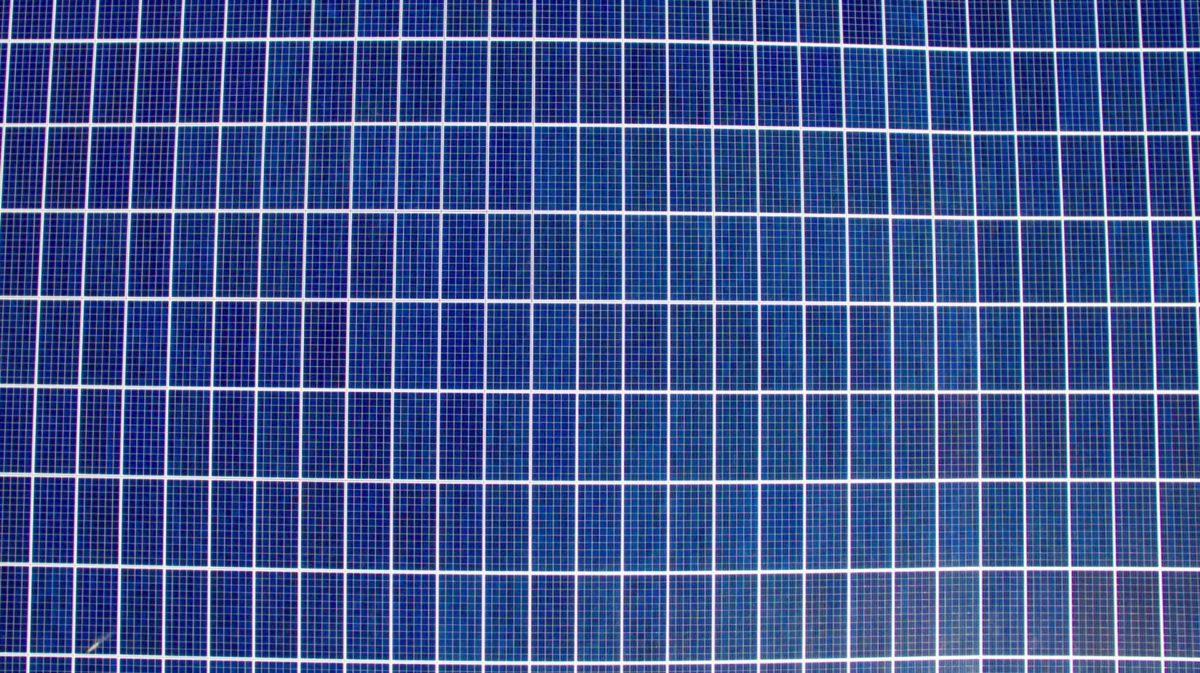Perovskites, perovskites, perovskites – one might think the product runs the planet with the number of headlines, but as of yet it still sits outside of the commercial market for solar power. There is, however, some serious advancement. OxfordPV in the UK and the Australians at Greatcell are both moving forward, with research pouring in from many labs globally.
One of the major benefits talked up about perovskites is the attractive price, due to easier production. However it has often been suggested that perovskite products could become more efficient via a property called “carrier multiplication.” Now evidence of that higher theoretical efficiency, per Dr. Chris de Weerd (left) and Dr. Leyre Gomez (right), has been “obtained using three independent experimental approaches, and is conclusive.”

The basic meaning of this research is that the Shockley–Queisser limit of ~33% for a single layer of silicon based solar cells, is now the Gomez-Weerd limit of ~44% for a single layer of perovskite solar cells. From an application standpoint – what this means is that the exact same hardware that was generating 300 or 400 watts is a solar module, using the same module material, same racking, same transportation, mostly same engineering, and same human labor – not the same inverters or balance of system though – can now potentially put out 33% more electricity with similar costs.
De Weerd, who successfully defended her PhD thesis based on this and other research last week, says:
Until now, carrier multiplication had not been reported for perovskites. That we have now found it is of great fundamental impact on this upcoming material. For example, this shows that perovskites can be used to construct very efficient photodetectors, and in the future perhaps solar cells.
The fundamental aspect of “carrier multiplication” is this: generally the excess energy of photons on a solar panel are released via heat because materials only give up a single “valence electron” at a time. However, in material like perovskites – the excess energy can excite an additional valence electron, and this second electron can generate electricity from the same photon. More electricity from the same sunlight.
Of course, we’ve gotten nowhere near silicon-based solar cells efficiency limits of 33% with modern products, and – more importantly – real close to 0% of the world’s current solar power installed is perovskite based. However, the research moves forward.
This content is protected by copyright and may not be reused. If you want to cooperate with us and would like to reuse some of our content, please contact: editors@pv-magazine.com.








33%? Lumeloid been around for 40 years as well with a efficiency of 70-80% with the capability to create energy even in the dark, Lumeloid does not use semiconductor principles to generate electricity, but exploits the same techniques radio antennae use to absorb radio waves; except that Lumeloid absorbs nano-scale visible light waves, in a process which in part mimics photosynthesis. The linear light polarizing molecules in the film act as the antennae to absorb the energy of a resolved component of photons incident on the film. For originator see Dr Alvin m Marks.
Marks raised money several times for Lumeloid research and failed to produce any sort of working prototype. Lumeloid was really just an unproven idea.
Marks raised money several times for Lumeloid research and failed to produce any sort of working prototype. Lumeloid was really just an unproven idea.
I’ve been reading about enormous leaps and bounds in materials research and development, and efficiency in solar cells for literally decades, but all of it seems to disappear, never to be heard of again.
Standard solar module has increased to almost 20% from 15% when I started a decade ago, that’s a lot of technology that does move forward. If you’ve been watching for decades you’ve seen efficiency improve from 12%, at most. And of course there are many research angles that fade away, that’s why its called research and development, and not production.
This is a really poorly researched article. The interpretation of this work is all wrong and omits what a Shockley–Queisser limit actually is (granted a concept that has evolved over time).
No reason to talk about what a Shockley-Queisser limit actually is, mainly since that limit technically wasn’t affected. This is a new pathway around that limit, which still exists as it always did.
I did refine my wording though in describing the event, it was off.
SEMPRIUS with its CPV technology has a conversion factor of over 33%.
Does it need trackers? Is it multi-junction?
Whether another tech exists with a higher theoretical limit is irrelevant to perovskite based solar technology, the important aspect to research in New potential solar technology isn’t whether it makes it to the market but the research and scientific value it offers because it can directly or indirectly push science and technology forward.
Dr. Alvin M Marks died before Lumeloid could be made commercially viable.
Coincidentally, his adopted son also died before it could be made commercially available.
Interestingly, no one else seems interested in pursuing Lumeloid. Seems anyone who does, dies.
A lot of money was thrown at Lumeloid over the years, but Marks failed to produce a working prototype.
From an article on this product: “Lumeloid uses a similar approach, but substitutes cheaper, filmlike sheets of plastic for the glass panels and covers the plastic with conductive polymers, long chains of molecular plastic units. Lumeloid is easier to manufacture and handle than Lepcon. The company declines, for competitive reasons, to identify the chemicals it uses to produce Lumeloid polymers.”
I can tell you from experience, polymers don’t do well with repeated high UV exposure and heat. Early “Bullitt proof” solar PV panels had problems with plastic yellowing, cracking and allowing moisture to effect the connections between cells.
Then there’s this claim: “The device, called the Lepcon, uses submicron antennas on a glass plate to convert sunlight into high-frequency alternating current, which is then changed by a miniature circuit to direct current.”
There have been more recent R&D of so called nanorectennas. It always seems to go back to the actual “rectifier bridge” ability to take high frequency light waves and “tunnel” this energy and frequency into a D.C. buss usable for D.C. power generation and storage. It seems the MIM diodes do not “tunnel” like they should. Perhaps a hybrid of standard solar PV cells around the edges of the solar PV panel, used as a biasing voltage for the MIMs diodes could get the efficiency up into the 60% solar harvest range could be achieved. If one could get the MIM diodes to work properly, a bifacial solar PV panel using different frequencies of the light spectrum could actually be designed for more UV capture during the day and the back side of the panel set up for infrared capture for when the sun goes down. Now wouldn’t that be interesting?
A “Cat wisker” or Diode Radio uses the same principle getting its power out of the air from the transmitting station. The sun is probably a billion times stronger. It is strictly a matter of perfecting the photo-lithography to create the diode arrays in a solar panel. We have developed much more complex and micro miniature circuits. Look at TV displays and CPUs!